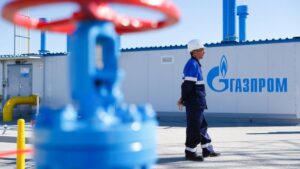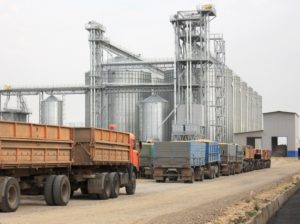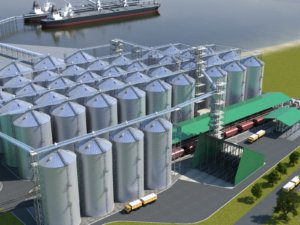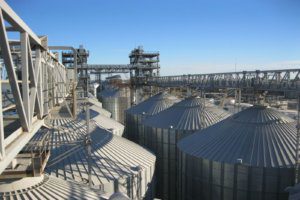
Gazprom (MOEX: GAZP) has again refused to book additional transit capacity via Ukraine for July despite the upcoming major repairs on export gas pipelines, according to data of the Regional Booking Platform.
Gas Transmission System Operator of Ukraine LLC on Tuesday put up for auction additional interruptible transit capacities for July totaling 63.7 million cubic meters per day, which were fully unclaimed.
Russia’s state-owned gas company has a long-term booking capacity of 40 billion cubic meters via Ukraine for 2021 at 109 million cubic meters per day, having booked an additional 15 million cubic meters per day at the June 21 auction for a total of 124 million cubic meters per day. Gazprom in June has been pumping an average of 124 million cubic meters per day via Ukraine at the fully booked volume.
When an auction for solid capacities is 100% sold, then an auction for interruptible capacities may be organized depending on the capabilities of the gas transmission system operator.
Gazprom earlier this year did not book interruptible capacities during the auctions held for May and June. However, major repairs are scheduled for July along the concern’s main export trunklines. For example, Nord Stream, which pumps 170 million cubic meters per day, is scheduled for annual maintenance from July 13 to 23; and Yamal-Europe, which pumps around 100 million cubic meters per day, is scheduled for maintenance from July 6 to 10.
The balance of the European gas market is becoming increasingly tense because of the unusual seasonal regularity of falling LNG supplies, and supplies of pipeline gas are decreasing owing to scheduled repairs. Pumping of gas into underground storage facilities is at minimum levels, leaving little doubt that Europe could begin the new winter season with half-empty UGS facilities.

Ukraine is utilizing 100% of its existing capacity for importing natural gas, Serhiy Makohon, the head of Gas Transportation System Operator of Ukraine, has said.
“The day has come! Imports of gas reached 66.3 million cubic meters, which represents 100% of our technical capacity. A landmark event,” Makohon wrote on Facebook.
The GTS’ throughput capacity on Ukraine’s border is 42.5 mcm/day from Slovakia, 19.5 mcm/day from Hungary, and 4.3 mcm/day from Poland.
Ukraine is planning to start the 2019/2020 heating season with 20 billion cubic meters of gas in its underground storage facilities, as it fears that Russia’s Gazprom will stop transporting gas through its territory after this year.
As of the morning of July 20, some 15.018 bcm was in underground storage, CEO of Naftogaz Ukrainy Andriy Kobolev said on Facebook earlier on Monday.
Between July 1 and July 20, some 1.473 bcm was pumped in, or 73.7 mcm per day. In June, 71.9 mcm/day was pumped in, and 62.9 mcm/day in May.

Dnipro Agro Group in 2018 increased its land bank to 50,300 hectares (16% or 7,000 hectares more), according to the company’s website.
According to the company, Dnipro Agro Group also almost doubled the capacity of elevators, to 124,000 tonnes. In addition, the company launched a pig breeding project for 1,300 animals.
According to the report, in the 2018 marketing year Dnipro Agro Group collected 69.8 tonnes of grain and 76.1 tonnes of oilseeds.
Dnipro Agro Group is a vertically integrated group of companies whose core business is production, storage and sale of grains and oilseeds.

Grain Alliance, a large agricultural producer in Ukraine, intends to increase its elevator capacity by 100,000 tonnes in the coming years, to 350,000 tonnes.
“In the coming years, we plan to add up to 100,000 tonnes to Grain Alliance’s capacities. But we will focus on the throughput capacity of the existing facilities. We plan to bring the average figure for the holding to 2.5 circulations at all elevator enterprises in the near future,” the company’s press service told Interfax-Ukraine.
The company clarified that in 2018 Grain Alliance increased its land bank by 3,000 hectares.
“Our company does not aim to build up the land bank at any cost. We understand well that land is not a goal, but the means of achieving a goal. Accordingly, we are not ready to overpay for land and infrastructure. However, the company is gradually raising its land bank, in particular, due to growth in villages where the holding is doing business,” the press service noted.
Grain Alliance cultivates more than 50,000 hectares of agricultural land in Kyiv, Cherkasy, Poltava, Khmelnytsky, and Chernihiv regions.

The annual port grain handling capacity in 2018 would grow by 6 million tonnes, reaching 49.9 million tonnes, the Ukrainian Sea Port Authority has reported. “This year, the construction of three more grain terminals was completed at the ports of Yuzhny, Berdiansk and Olvia. They will increase annual modern grain transshipment capacity by another 6 million tonnes,” Head of the administration of the Yuzhny branch of the Ukrainian Sea Port Authority Maksym Shyrokov said.
He recalled that over the past five agricultural years, the volume of grain exports through the seaports of Ukraine has almost doubled, from 22.1 million tonnes to 43.9 million tonnes, and in total 52 grain terminals operate in the ports of Ukraine. According to him, the construction of transshipment complexes, terminals, reconstruction and construction of berths continues in Mykolaiv, Chornomorsk, Odesa, Mariupol and Yuzhny ports.
The countries of Asia, the Middle East and North Africa remain the main destinations for grain export deliveries through Ukrainian ports, while the EU countries reduce grain imports from Ukraine, Shyrokov said.

Nika-Tera maritime terminal (Mykolaiv), part of Group DF of Dmytro Firtash, is increasing its oilseeds storage capacity to 30,000 tonnes, according to a press release of the port. According to the company, the port is continuing work on commissioning the second phase of a transshipment complex for oilseeds.
According to the report, the volume of cargo transshipment at Nika-Tera port since the beginning of the year amounted to 3.7 million tonnes, which is 10% more than in the same period of 2017, while for the nine months of the current year 221 vessels were handled.
“A significant increase in the volume of transshipment was provided by cargo that was not previously processed in the port: oil, granulated meal and bran, as well as new items of bulk freight,” the press service said citing commercial director of the port Valeriy Salnykov.
Nika-Tera is a highly mechanized marine terminal, part of Group DF’s port business.
The terminal includes four specialized complexes: grain, for transshipment of fertilizers, bulk freight, and liquid cargo.